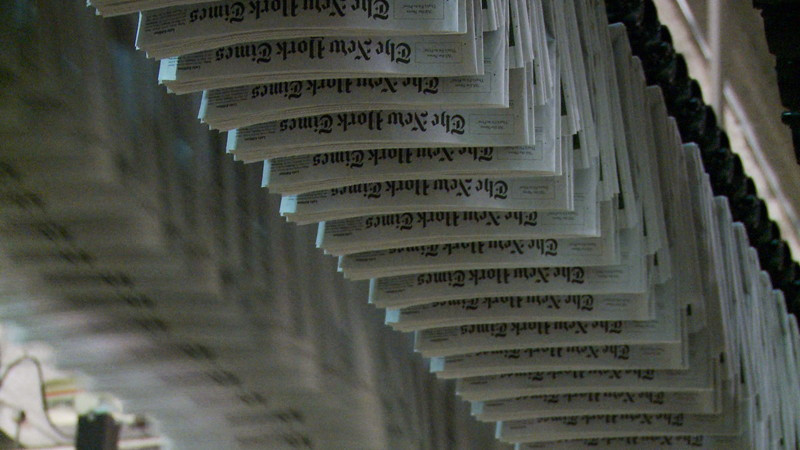Mainstream media’s last stronghold exposed
Step inside the world of the New York Times
The widespread downsizing and bankruptcies among mainstream (and especially print) media over the last few years has remained at the fringe of most people’s consciousness. Page One: Inside The New York Times gives the troubled newspaper a variety of human faces and a clear, if sometimes contradictory, voice.
Andrew Rossi’s documentary focuses on the New York Times’s Media Desk, a section ironically doomed to follow and report on trends that could lead to the demise of the newspaper industry, including the Times itself.
The camera follows five staff, from frontline reporters to section editors and the executive editor of the Times, catching candid footage of the paper’s inner workings.
The potentially impending failure of the Times is a question revisited throughout the film. Some in the film, such as media reporter David Carr, strongly believe the paper will survive, while others admit they’re less sure.
The list of challenges is massive.
Not only has the advertising market been decimated, but the very substance of the paper can often be found elsewhere for free.
The printed classifieds section was long ago made redundant by online classifieds such as Craigslist and Internet job search options. Add to that issues of integrity, such as Judith Miller’s questionable reporting, in the New York Times, on the need to enter Iraq back in 2003.
The film pauses in moments of reflection over these issues, but by no means presents the demise of the Times as a closed case.
Beyond exploring the future and history of the newspaper, Page One provides a window into how the modern New York Times works. The fast-paced, deadline-oriented, paper-filled newsroom is definitely present, but the human relationships and discussions really take centre stage.
There is no yelling, no hierarchical cards being played. The film documents the exchange of ideas that leads to a finished story.
Whether it’s between source and reporter, or reporter and editor, it’s difficult to figure out what the rules are, which rules are being broken or if there are even rules at all.
The film touches on many significant issues over the last few years. The New York Times’s decision to publish certain excerpts from Wikileaks documents was controversial, but arguably the beginning of a new approach to providing news coverage – an approach in which the venerable Times must work with new kinds of sources.
Technology also plays a large role. The introduction of charging readers to view the Times website is a contested issue in the film, but it’s found to be a necessary way to stay financially viable and one that has since been implemented.
The film is brilliantly shot and presented, and is essential viewing for those intrigued by the modern media and one of its oldest institutions.
The close bond formed with the characters almost clashes with the documentary approach, but in the end serves to provide a better sense of what makes the New York Times work.
Published in Volume 66, Number 4 of The Uniter (September 22, 2011)







